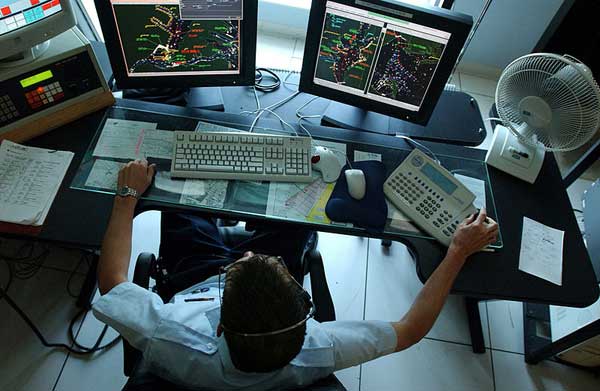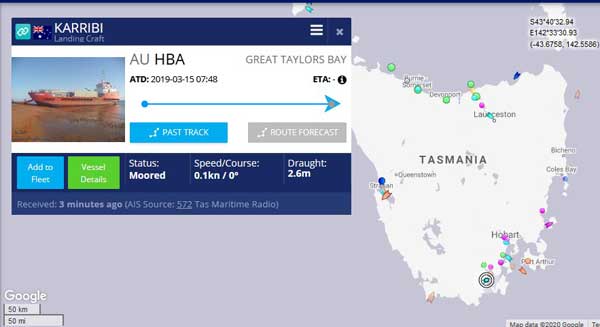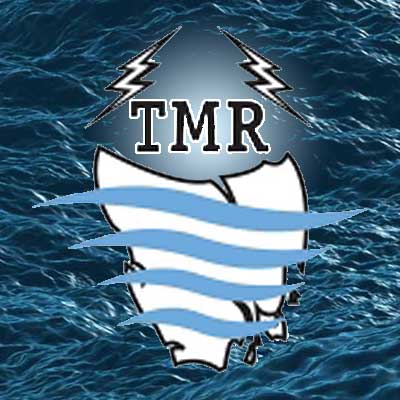
Photo: Wikipedia
AIS
Added safety in busy waterways.
The Automatic Identification System (AIS) is an automatic tracking system used on ships for identifying and locating vessels by electronically exchanging data with other nearby ships and AIS base stations.
AIS in Search & Rescue operations
For coordinating the resources of a marine search and rescue (SAR) operation, it is imperative to have data on the position and navigation status of other ships in the vicinity. In such cases, AIS can provide additional information and enhance awareness of available resources.
Information provided by AIS equipment such as unique identification, position, course, and speed, can be displayed on a screen. AIS integrates a standardised VHF transceiver with a positioning system such as a GPS receiver with other electronic navigational sensors. Vessels fitted with AIS transceivers and transponders can be tracked by AIS base stations located along coastlines.
How does AIS work?

Image: marinetraffic.com
An AIS periodically transmits its data on VHF channels 87 & 88. An AIS receiver connected to an antenna 15m above sea level will have a range of 15-20 nautical miles. Higher base stations may be able to receive up to 40-60nm. Some base stations are equipped with an AIS receiver, a PC and an Internet connection so that the AIS information reaches a central database. The information captured in this database can be viewed worldwide using Internet applications such as Live Ships (www.marinetraffic.com).
The MMSI
Vessels are uniquely identified by an MMSI (Maritime Mobile Service Identity) which is a nine-digit code programmed into your AIS transceiver. In Australia MMSIs are allocated by AMSA (Australian Maritime Safety Authority). RCC (Rescue Coordination Centre) Australia maintains the registration database.
The first 3 digits of a ship's MMSI indicate its country of origin, for Australia this is 503, so an Australian vessel may have an MMSI such as 503799200. This not a callsign, it is used for AIS and DSC equipment only.
Where should AIS be installed?
The International Maritime Organisation's International Convention for the Safety of Life at Sea requires AIS to be fitted aboard international voyaging ships of 300 gross tonnes or more and all passenger ships regardless of size. AIS comes in class A equipment for larger ships, and the more cost-effective Class B for smaller ships and recreational vessels.
Portable devices
Recently devices such as 406 MHz EPIRBs fitted with an AIS transmitter have become available. These have an MMSI beginning with 974 (eg 974 123 456) when registered in Australia.
Man Overboard (MOB) devices have MMSIs beginning with 972 when registered in Australia.
What if I want one for my boat?
If you are thinking of purchasing any of these AIS devices, remember that you have to apply to get your MMSI from AMSA who may require you to be certified to used marine radio equipment.
What does Tas Maritime have to do with AIS?
Tas Maritime has AIS receivers located at Mount Nelson and Mount Mangana. These receivers cover most of SE Tas and are linked back to a computer at our operations centre in Hobart. Here AIS transmissions are decoded and displayed on an electronic chart on a big screen. Data is also sent to the Marine Traffic website. If you decide to install AIS on your vessel and you are a member of Tas Maritime Radio, we ask you to include your RG Callsign in your vessel’s ID field, so that we can than see clearly where vessels registered with us are located.
